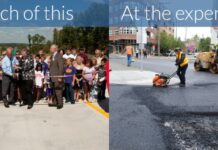With the UN Decade of Sustainable Transport, ITDP Calls for Scaling More Public Transport
As the United Nations inaugurates its first Decade of Sustainable Transport (2026–2035) this December, the Institute for Transportation and Development Policy (ITDP) is urging...
Committing to Clean Transport, Together
The world stands at a crossroads towards achieving greener, more livable cities that can deliver measurable emission reductions and meet global climate goals. Every...
A Turning Point for Mexico’s Vehicle Standards — and Its Climate
Three leading civil society organizations — ITDP Mexico, the Mexican Center for Environmental Law (CEMDA), and El Poder del Consumidor (EPC) — recently joined together...
Lessons from Jinan, China’s Electric Transformation
In recent years, China has emerged as a global leader in public transport electrification. From megacities like Shenzhen and Beijing to provincial capitals, the...
Lessons from Jinan, China’s Electric Transformation
In recent years, China has emerged as a global leader in public transport electrification. From megacities like Shenzhen and Beijing to provincial capitals, the...
How to Keep SUVs Out of Emerging Economies
Car-centric transportation systems have seriously damaged the environment, safety, and livability of cities around the world. Fossil-fuel-based passenger transport is a major contributor to...
ITDP at 40: A Conversation on Four Decades of Sustainable Transport
2025 marks the 40th anniversary of ITDP. It’s a time to reflect on our journey from grassroots activism to global influence, and to look...
Low Emission Zones Can Breathe Life into India’s Future
The Indian city of Chennai – from the bustling markets of T Nagar to the IT parks in OMR, is a city constantly on...
3 Urgent Actions for Indian Cities to Reduce Vehicle Emissions
A recent study by the Indian Institute of Tropical Meteorology demonstrates the extreme impacts of vehicle emissions on pollution and air quality across India. Conducted...
What Is A Low Emission Zone?
In cities experiencing rapid urbanization especially, there is a need to shift away from both private cars and transition to electric vehicles to address...










